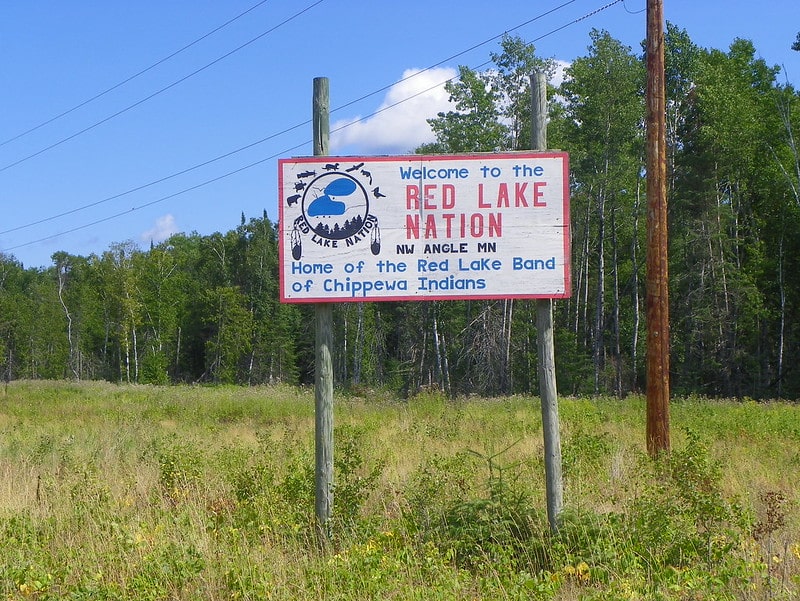
Photo by Flickr user David Tan, CC-BY
So folks, we need to have a chat about this whole “workforce housing” thing. It’s a problem.
Or rather, the way it is often being used these days is a problem, which is as shorthand for housing for people who aren’t really low-income, but are still having trouble affording housing in a hot market. Moderate or middle income, depending where you are. At the time this article was written, ULI defined it as housing for people making 60 to 120 percent of area median income (it no longer does, link above is an archived version), but I have heard it most often coming up with respect to projects in the upper end of that range (or that range in an area with a very high AMI).
It is meant to be for teachers, cops, nurses. It is being specifically contrasted to “standard” affordable housing.
For example, see this definition from a Business Miami article:
Workforce housing policies focus on providing attractive and affordable homes for middle-income service workers, such as police officers, teachers and nurses, in close proximity to their jobs. It is primarily a concern in regions like South Florida with high housing costs. HUD does not distinguish between affordable and workforce housing. But many housing authorities define workforce housing as homes aimed at households earning from 60 percent to 120 percent of the area’s median income (AMI). In contrast, the term affordable housing is generally used for households whose income is less than 60 percent of AMI.
I hope the problem with this is obvious:
The low-wage workforce is still the workforce!!
The vast majority of people making less than 60 percent of AMI (and even a significant portion of those much poorer) are working, and they are working at essential jobs that make our economies function, from home health aide, to school bus driver, to day care worker, to farmworker to cashier.
Not only are these frequently not living wage jobs, they are often jobs with less opportunity for advancement to living wages (and thus those who have them are likely to need housing assistance for longer than people who are likely to get raises and promotions in a few years). These jobs also tend to have inconsistent hours, crappy benefits, and poor working conditions.
But they are unmistakably and unarguably work. Not wanting to accord those jobs dignity and respect as a society is part of what allows them to continue to offer such horrible conditions.
To imply that somehow anyone who is low income is not in the workforce is horribly insulting—and insulting to the very population that has always been community development’s core constituency.
Now, I’m not saying we shouldn’t try to address the issue that folks at a moderate- to middle-income range and/or in these important and politically appealing professions are struggling with housing affordability and a jobs-housing mismatch. Though it is a challenge in terms of limited resource allocation, it’s a reasonable concern not to want a popular community to only house the very wealthy and maybe some lower income folks in more deeply subsidized housing, but to want it to have a full economic mix, and not force a segment of its employees into far-flung commutes.
I also get it, kind of, as to why the term is tempting. After years of fighting the stereotypes neighbors have of affordable housing—that it’s going to bring down property values and be full of people who bring crime for example (all of which have been repeated disproven)—it’s easy to see why a term that tries by its very name to circumvent those reactions for once and push positive buttons in the brains of those who need convincing is appealing.
Often these developments are explicitly marketed to, or even limited to, particular professions, like teachers or emergency personnel, so there is a bit of an association with specific professions that suggests the idea.
But that’s an awfully hollow victory if what we are doing by it is REINFORCING those stereotypes by comparison for the rest of the affordable housing world, who are, it needs to be said, trying to house people with much greater needs and fewer options.
If “workforce housing” means the limited slice of affordable housing it is currently used it to mean, does it not imply that other affordable housing is non-workforce housing? Can’t you picture the politicians and neighborhood association leaders you’ve nominally won over going on to say, “Well, I’m ok with some workforce housing, but not that other stuff. We don’t need layabouts in our town.”
How could anyone in good conscience do that to the rest of our colleagues?
We have enough trouble with the stigma on the term “affordable housing,” which of course replaced “low-income housing” to try to avoid the negative images that term had started to carry. But those terms are loaded because of the associations put on them by opponents, not because of any inherent problem with the terms.
Workforce housing, as it’s currently being used, has an inherent problem.
It could be redeemed if we just decided as a field that actually, it just is the new replacement for “affordable housing,” and it refers to ALL housing that is built to be affordable to someone who can’t afford market rate housing. That could have a bit of a ring to it, even.
Or if we took it back to the original intent of the term, which meant housing near particular job centers affordable to the people who have those jobs, whatever they are. (Caveat there, of course, is that wherever there are concentrations of moderate- and middle-income jobs there are also concentrations of low-wage and poverty-wage jobs supporting them, so true workforce housing for that area would need to be for a range of incomes.)
But neither of those is how I hear it used these days. And if “workforce housing” can’t be brought around to one of those meanings, it needs to be retired.
Update: The article was updated April 10, 2023, to reflect a change in how ULI defines the term workforce housing.






Hi there
I agree that we shouldn’t be separating work force and affordable, but I also know that people don’t support new affordable housing projects “in their backyard”. I am looking for a new term that encompasses both low and middle income and sounds compelling. A name that makes people want to live there.
I live in Tahoe where the problem is that wealthy out of towners buy all the houses. Then all the locals who make even close to $100K are forced out. I know this is a problem elsewhere too so I’m wondering if you have heard of any communities coming up with a new name or designation that sounds good and is deed restricted for locals only…
Rebecca,
Restricting to locals only is actually really tough because you can run afoul of fair housing laws. But there many programs that focus their marketing efforts and outreach on local residents.
You might find this useful: https://shelterforce.org/2015/02/04/dont_call_them_homeless_veterans/ And this: https://www.enterprisecommunity.org/resources/you-dont-have-to-live-here.
Good luck!
Kudos to Shelterforce for its attempt to bury the phrase “workforce housing,” a phrase born and designed to be an obfuscation. Certainly there is no reason to hide the idea that we are for housing that is affordable to the range of low and moderate income earners. However, there is another type of workforce housing that we should also continue to be for——employer-assisted housing, an idea that Shelterforce at one time did much to promote.
Employer-assisted housing can address a variety of employer concerns and if done right can also enable workers to obtain more affordable and convenient housing. With the proper public participation employer investment can be steered into communities where the market needs demand while discouraging investment in overheated or gentrifying neighborhoods. While home ownership programming is usually offered, there is no inherent reason why employers couldn’t partner with nonprofits to offer rental, land trust and shared equity opportunities. What is needed now are local and state policies and programs that encourage employers to participate in such efforts, for their own good, the benefit of their workers and as good corporate citizens of the communities in which they are located. —Dan Hoffman
Great Idea Hoffman! Just wish we had more employers who are willing to do this. And, its problematic for low income neighborhoods where there are no employers to take this on.
I agree with your assessment but did I miss your suggestion for a term referring to that “missing middle” housing that is 80-120% AMI? We are struggling with this as well.
I don’t like the term because it implies that we live to work and not the other way around. How thoughtful it is to build “workforce housing” people can easily get to work and then hand their earnings over on rent that increases annually.. After all, who will do the work so the corporations can bank if the work force has gone homeless. There should not even be a need for such housing if people were paid living wages.
Jeff,
No, you didn’t miss it. My best suggestion so far has been just moderate-income housing, but that’s far from perfect. (Or to use workforce housing to mean the whole range of affordable housing.) Please do let us know if you come up with a better idea!
Miriam
Just call it “affordable housing” and “less affordable housing.” Tah-dah 🙂 jk.
Hmmm what about numbers? Those terms aren’t biased. Affordable housing can be called “sixty homes” and workforce homes could be called “60-120 homes” or “median homes.”
How about “civil servant housing” teachers, police, nurses, EMTs, firemen, social workers, local government officials etc are all civil servants and they should be housed near the communities the serve for many reasons including the bonds and empathy they develop from serving their neighbors. Working at Walmart does not require the same bonds to be built for the purpose of the work or the community (and I think there is no avoiding the stigma that accumulates around terms like “low income housing” it’s based on observation and stereotypes which, while overbroad, are rooted in observation. Term shifting is only a temporary fix, perhaps would “subsidized housing” be better?
This is a lie, two minimum wage workers do not qualify for 50% AMI or less. The income is very restrictive! It’s practically just for one minimum income worker and their kids cause it doesn’t qualify even a second adult working!
Mar, because area median income varies with the area not than minimum wage does the relationship between the two will vary. Still, the point here is that people making minimum wage, and maybe not managing to get full time hours, are still workers.
How about Afffordable Workforce Housing (<$60k) and Workforce Housing ($60-120k)?
ULI’s Terwilliger Center for Housing has neither defined nor used the term “workforce housing” in the way described in this article for many years. Please check the link provided.
Sadly, the term is still being widely used just the way it was when I wrote this.
Christopher, I’m glad to know ULI has changed the way they talk about it! (This is article is almost 10 years old.) Thanks for letting us know. We’ll make an update to the article, and change that link.
Thank you very much, Miriam! I got to this piece through the more recent link. Even though ULI has shifted away from the rightly disfavored usage, others’ references to it as our definition continues to give it legs, so I appreciate your helping to stem that. Thanks again.